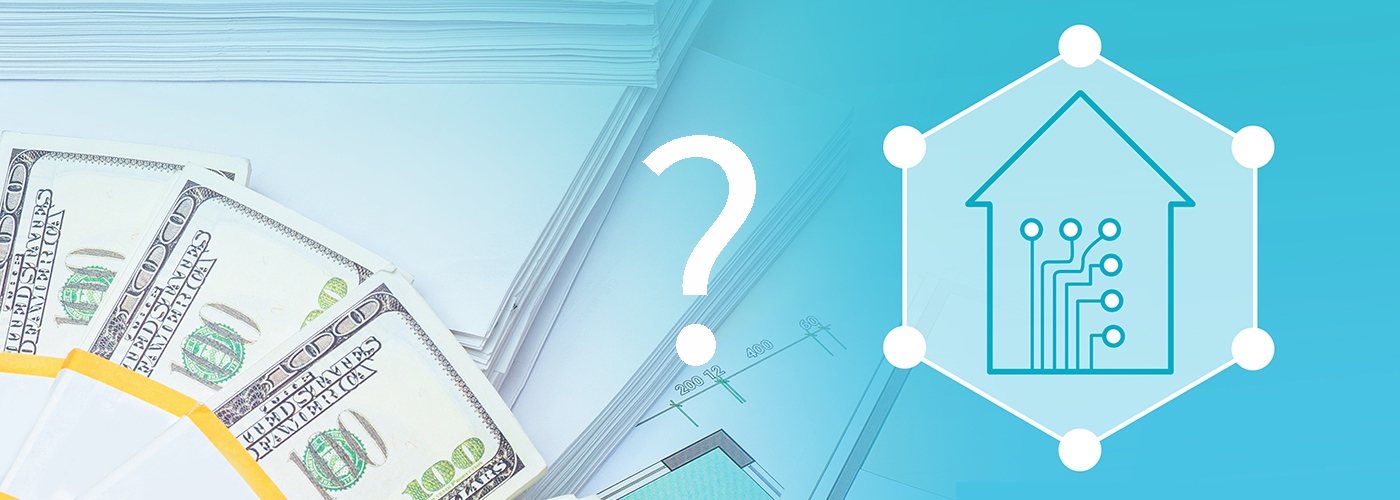Many times, while evaluating the value created in digitalization projects, it is easy to just look at the price of the device or asset instead of the total cost of ownership (TCO). But is the price of the IoT device the only cost you need to pay for?
No.
While some solutions are easily deployable and scalable, there are many things to consider before data starts to stream into a service. We must not forget about the things to be done during the whole life cycle of a service. The devices need to be installed, connected, and paired to a service, maintained, and updated, among other things, during the lifecycle. This is why it is important to consider the TCO in smart solutions.
TCO in smart solutions: what to consider?
Below, we consider and present the most important factors affecting the TCO in smart solutions for buildings and offices. Actually, the TCO in smart solutions is a bit like an iceberg – there are a lot more things than meets the eye.

Hardware cost
Hardware however is however very important in smart solutions, so you would always need to consider it. Choosing the right devices can help minimize these costs. It’s essential to select devices that meet your needs and consider the overall quality of the hardware. Opting for low-cost options may seem tempting, but it can result in higher long-term costs due to maintenance and replacement needs. It’s also important to factor in the installation and setup costs of the hardware, however, great solutions have this covered.
Investing in high-quality hardware upfront may have higher initial costs, but it can lead to lower long-term costs by reducing maintenance and replacement needs. By choosing the right devices, budgeting for installation and setup costs, and investing in high-quality hardware upfront, you can minimize hardware costs and optimize the TCO of your smart solution.
Pre-configuration & security cost
After choosing the hardware for your project, you need to consider the pre-configuration and security aspects of the service. For a real plug & play service, the solution needs to be as simple as possible, from the point of view of the installer. A pre-configured mesh solution with auto-routing is a perfect solution to get the installation as easy as possible.
In mesh technology, each IoT device can transmit data from other devices, and data routing is automated. From the perspective of the person deploying the IoT devices, this means that the only thing they need to do is to put the power on to a device and make sure it is connected to another device. The mesh technology and pre-configuration take care of the rest in a secure way.
Later on, changes in the device network do not need any manual configuration of devices or human interaction as you can just take the device, move it to a new place, and again, make sure it is getting a connection to another device. Simply put, the rerouting of data is done automatically by the mesh technology. When these are lacking the manual work and human interactions as well as human error will increase adding substantially to the total cost of ownership.
Installation & training
When thinking about the TCO in smart solutions, you need to consider the installation and training costs that occur. Easily deployable solutions reduce the potential costs of installation and training because they do not need special personnel or purpose-built tools for deployment. If a solution is easily installed by anyone, there is no need for complex training that would burden the solution’s profitability.
Having a solution with an installation tool readily available shows the location of devices and their measurements to anyone, making the pairing of devices very easy. This choice is important to evaluate beforehand, so no unwanted surprises occur in this phase.
IoT connectivity cost
To ensure that data is transmitted to the cloud service reliably, a reliable and robust connectivity solution is necessary. In a global environment, managing local connectivity can be challenging, and arranging global connectivity can be time-consuming. They can also have surprisingly high costs related to them, so considering the cost of your chosen connectivity is important.
Read more: What 2G & 3G shutdowns mean for your business?
One solution is to use a global roaming cellular connectivity service, which is often included in high-quality IoT devices and gateways. This allows the end-user to avoid worrying about connectivity and instead focus on utilizing the technology provided. By selecting devices and gateways with reliable connectivity services, the end-user can ensure that data is consistently transmitted to the cloud service without interruptions. This also means that you don’t overshoot your expenses with connectivity.
Device management & maintenance
Now we are at the point to get the data to the service. But how to manage and maintain IoT devices in the future? To avoid physical visits at a site remote device management is needed. Through device management, it is possible to check if the device is working, make configurations, group devices, firmware updates, and so on. All this is done remotely, for a massive number of devices. All these together give a set of tools to make the operation of devices very easy during the whole life cycle.
Again, if the security and firmware updates as well as checking the status of the IoT devices is not possible to do remotely and in a single view then the human interaction increase exponentially which means reducing the scalability of the solution coupled and increasing the TCO in smart solutions.
Conclusion
The total cost of ownership in smart solutions is influenced by various factors, including hardware, configuration & training, and connectivity costs. When considering choosing a solution, it is essential to carefully evaluate each of the factors and make informed decisions based on your business requirements.
There are very clever solutions available that save you time, effort, and money, in comparison. These solutions can scale up very widely easily and you can focus on service development and customer relations – the key thing a solution provider needs to pay most of their attention to.

